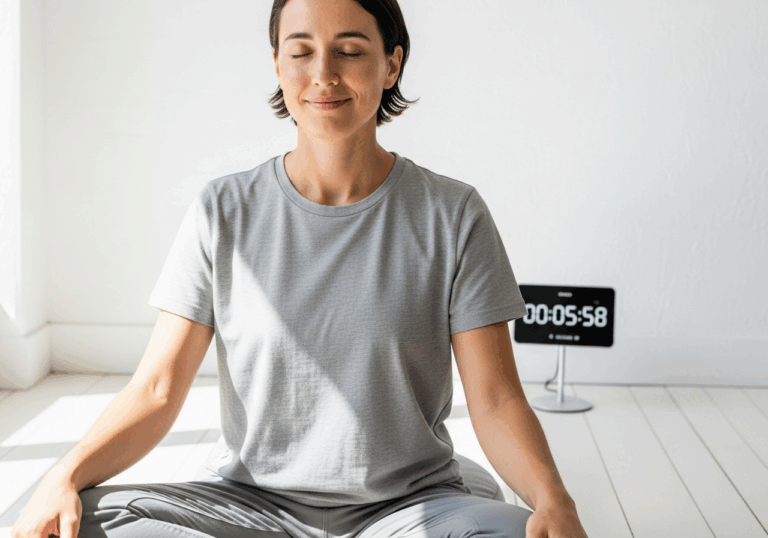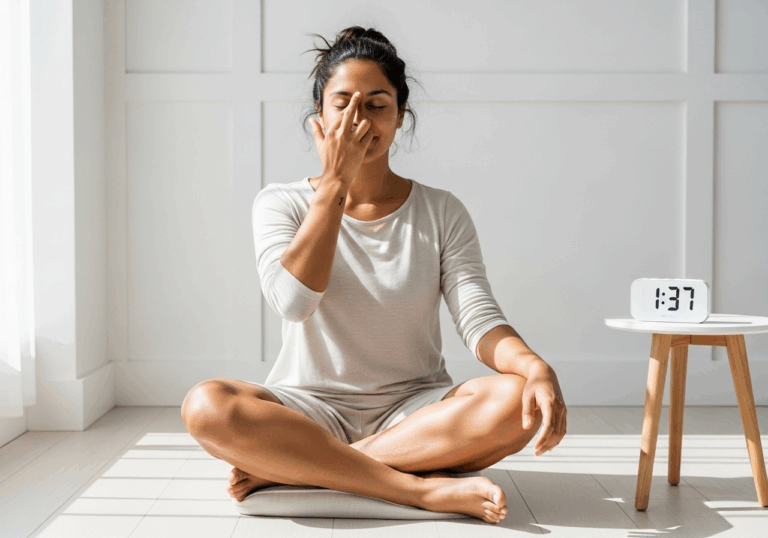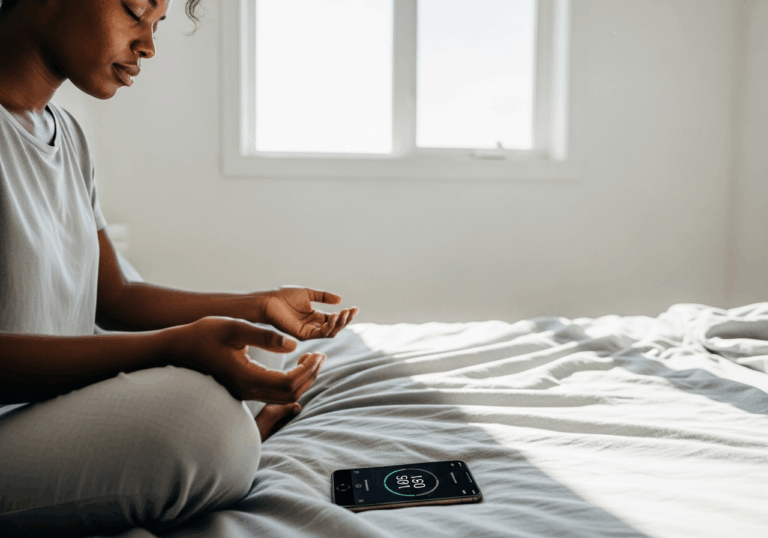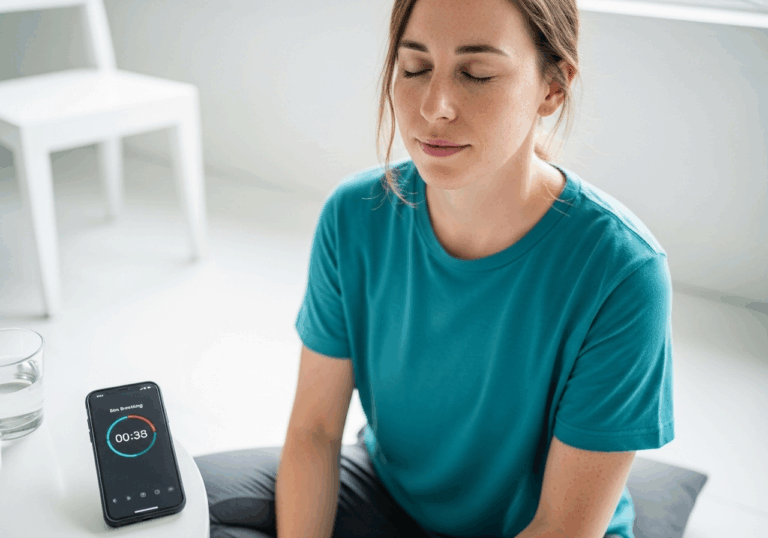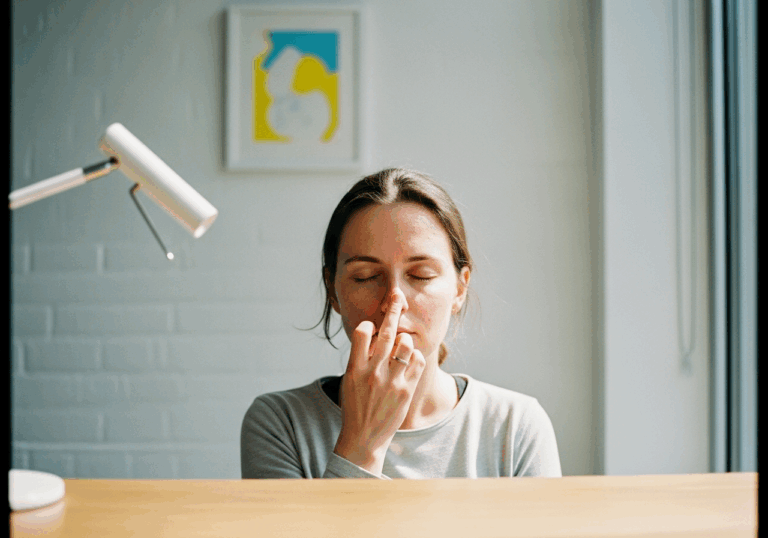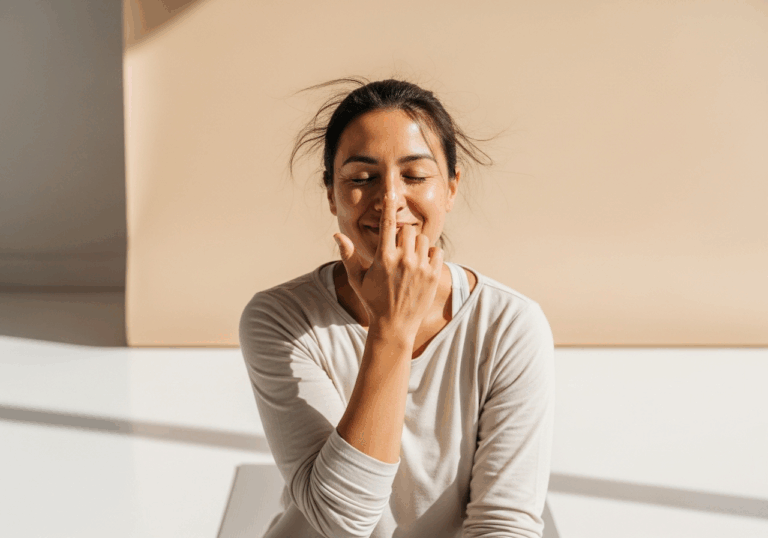Science-Backed Tips
Boost Your Mood with Paced Breathing
10 minutes of paced breathing increases HRV by 30%
📊 Did you know?
💡 Why It Matters
1️⃣
Improved HRV coherence can enhance emotional regulation, potentially reducing anxiety levels by up to 30%.
2️⃣
Higher HRV is associated with better cardiovascular health, which can lower the risk of heart disease.
3️⃣
Practicing paced breathing may improve overall quality of life by promoting a sense of calm and wellbeing.
✅ Try These Micro-Tips
🎯
Practice paced breathing for 10 minutes daily at 6 breaths per minute.
🎯
Incorporate soothing rhythm breathing techniques for additional relaxation.
🎯
Engage in nature walks for 20 minutes to complement breathing exercises.
🎯
Track your HRV using a wearable device to monitor improvements.
📚 The study
The study involved 96 participants who were randomly assigned to either a paced breathing group, a soothing rhythm breathing group, or a control group that watched nature videos.
The results were striking: both breathing techniques significantly increased HRV measures, particularly the standard deviation of NN intervals (SDNN) and low-frequency (LF) HRV, compared to the control group.
Notably, the 6-breaths-per-minute pacing produced the highest LF/HF ratio, suggesting enhanced autonomic balance.
This is significant because greater HRV coherence is linked to improved emotional regulation, which can lead to a reduction in anxiety levels by up to 30%.
Furthermore, higher HRV is associated with better cardiovascular health, potentially lowering the risk of heart disease.
By incorporating paced breathing into daily routines, individuals can not only promote a sense of calm and well-being but also improve their overall quality of life.
This study highlights the power of simple breathing techniques in fostering emotional resilience and physical health, making it a valuable tool for anyone looking to enhance their mental and emotional well-being.
❓ Frequently Asked Questions ❓
Learn more
What is paced breathing?
Paced breathing is a technique that involves controlling your breath rate to achieve a specific rhythm, typically around 6 breaths per minute. This practice can enhance physiological coherence and improve emotional regulation.
How does paced breathing affect heart rate variability (HRV)?
Paced breathing significantly increases measures of heart rate variability, such as SDNN and LF HRV. Higher HRV indicates better autonomic tone and emotional regulation.
What is the optimal breathing rate for paced breathing?
The optimal breathing rate for paced breathing is approximately 6 breaths per minute. This rate has been shown to produce the highest LF/HF ratio in heart rate variability measurements.
How long should I practice paced breathing?
It is recommended to practice paced breathing for 10 minutes daily. This duration has been associated with significant improvements in mood and HRV.
Can paced breathing reduce anxiety levels?
Yes, practicing paced breathing can potentially reduce anxiety levels by up to 30%. This reduction is linked to improved HRV coherence and emotional regulation.
What are the benefits of higher HRV?
Higher HRV is associated with better cardiovascular health, which can lower the risk of heart disease. Additionally, it reflects improved emotional regulation and overall well-being.
How can I incorporate breathing techniques into my routine?
You can incorporate breathing techniques by practicing paced breathing for 10 minutes daily and adding soothing rhythm breathing for relaxation. Engaging in nature walks for 20 minutes can also complement these exercises.
What is the significance of the LF/HF ratio?
The LF/HF ratio is a measure of autonomic balance, with higher values indicating greater sympathetic activity relative to parasympathetic activity. A higher LF/HF ratio from paced breathing suggests improved emotional regulation.
How can I track my HRV improvements?
You can track your HRV improvements using a wearable device that monitors heart rate variability. This data can help you assess the effectiveness of your breathing practices over time.
What was the control condition in the study on paced breathing?
The control condition in the study involved participants watching a nature video without any breathing exercises. This group showed significantly lower HRV measures compared to those practicing paced breathing.
